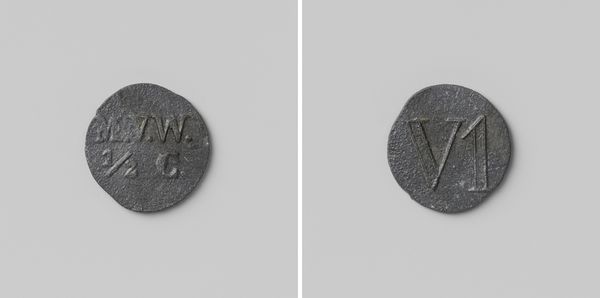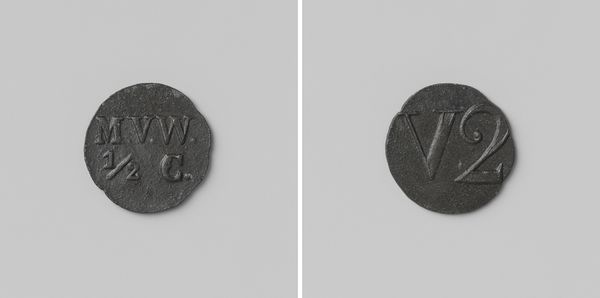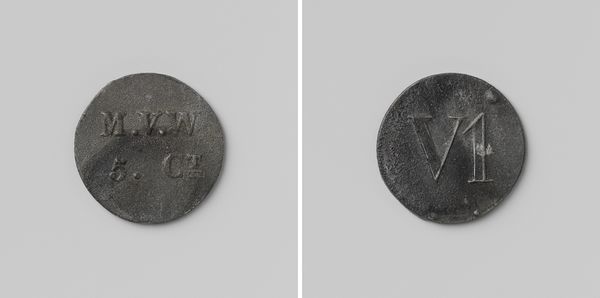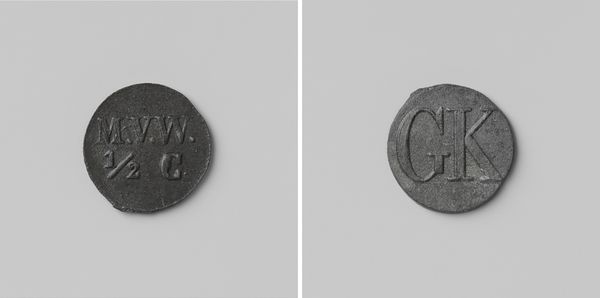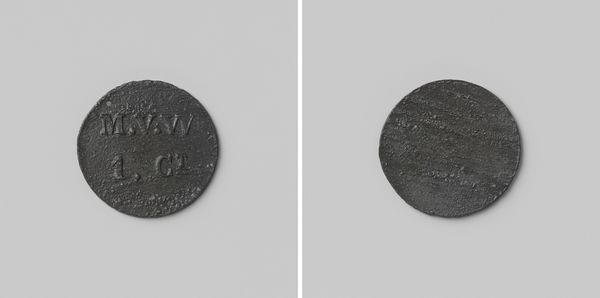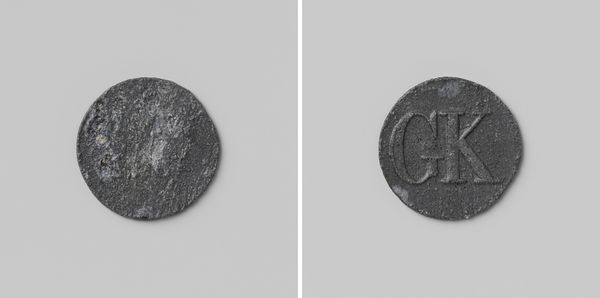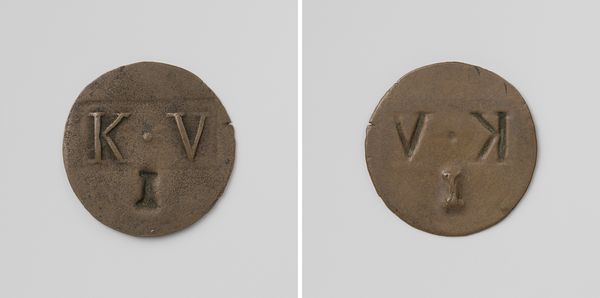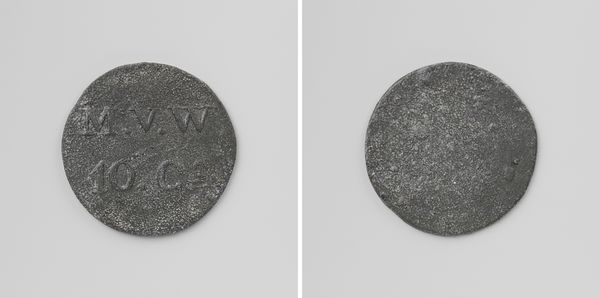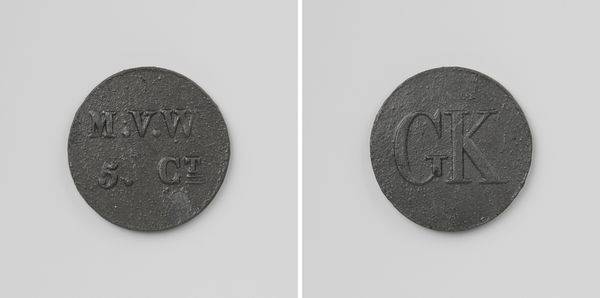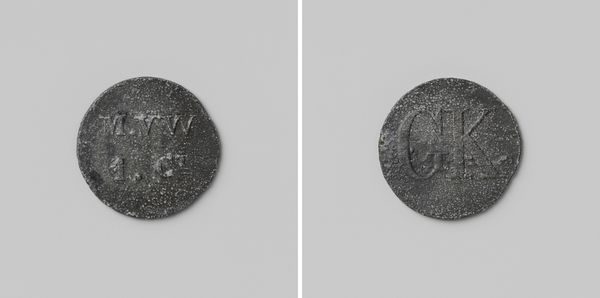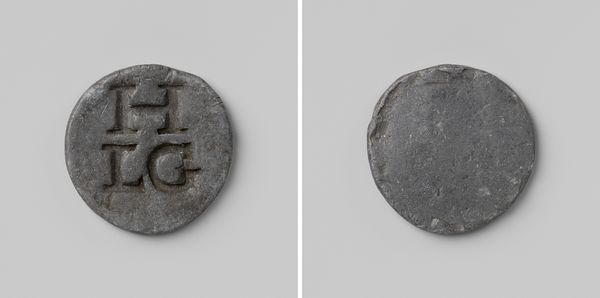
Derde gesticht van de strafkolonie Veenhuizen, huismunt geslagen op last van de Maatschappij van Weldadigheid ter waarde van vijf cent 1818 - 1859
0:00
0:00
print, metal, engraving
#
portrait
# print
#
metal
#
history-painting
#
engraving
Dimensions: diameter 2.1 cm, weight 2.46 gr
Copyright: Rijks Museum: Open Domain
Curator: Before us is a rather peculiar piece from the Rijksmuseum’s collection. It's a house coin, minted between 1818 and 1859 by the Maatschappij van Weldadigheid for the Veenhuizen penal colony. Editor: It’s unassuming, almost stark in its simplicity. The monochrome metal and plain lettering project a solemn and utilitarian aesthetic. Curator: The austerity absolutely reflects the environment it was intended for. Veenhuizen was not just a prison, but also an attempt at social engineering, a place where the poor and orphaned were meant to be "re-educated" through forced labor. The tokens were created to be used as internal currency within the colony. Editor: It’s fascinating how such a basic design reflects deeper issues of control and containment. On one side, we have 'M.V.W.' and '5. Ct,' representing the Maatschappij van Weldadigheid and the five-cent value, while the other shows a V3, likely denoting the "Derde Gesticht," or Third Establishment. It is intriguing how the creators sought order through concise representations. Curator: Exactly! These weren't regular citizens freely engaging in commerce. They were disempowered people living within a very strict system, whose interactions with the outside world and with each other were restricted through money. Editor: It speaks to how systems can influence daily life and individual psychology. Though only small, the coin acted as a regulator within a microcosm of power. Curator: And these pieces allowed the Maatschappij van Weldadigheid, in part, to dehumanize the individuals, who, rather than be engaged citizens, had to conduct themselves under limited access to commodity. They were subject to financial regulations set forth in this manufactured state of social welfare. Editor: It’s a poignant illustration of form following function. These tokens embody an isolated reality, where basic visual components symbolize institutional power, confinement, and social discipline. The weight, material, and design convey that message, if inadvertently. Curator: By visually stripping back ornament, one could say that such pieces invite us to confront our own systems of value and social welfare with honesty, even critique, concerning who they truly serve and at what price. Editor: Indeed. It proves the depth that can exist in even the simplest of forms; it reminds us to read deeper.
Comments
No comments
Be the first to comment and join the conversation on the ultimate creative platform.
